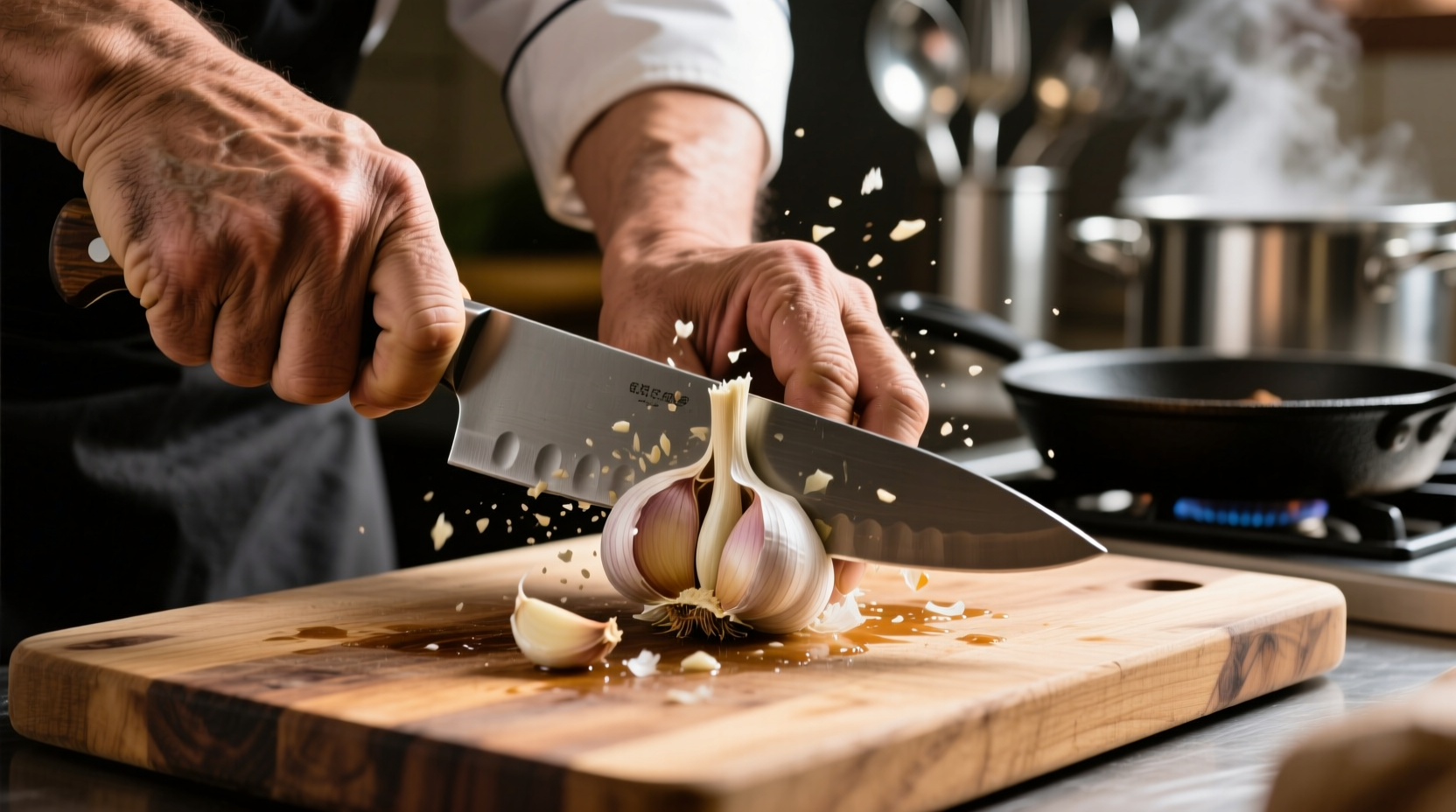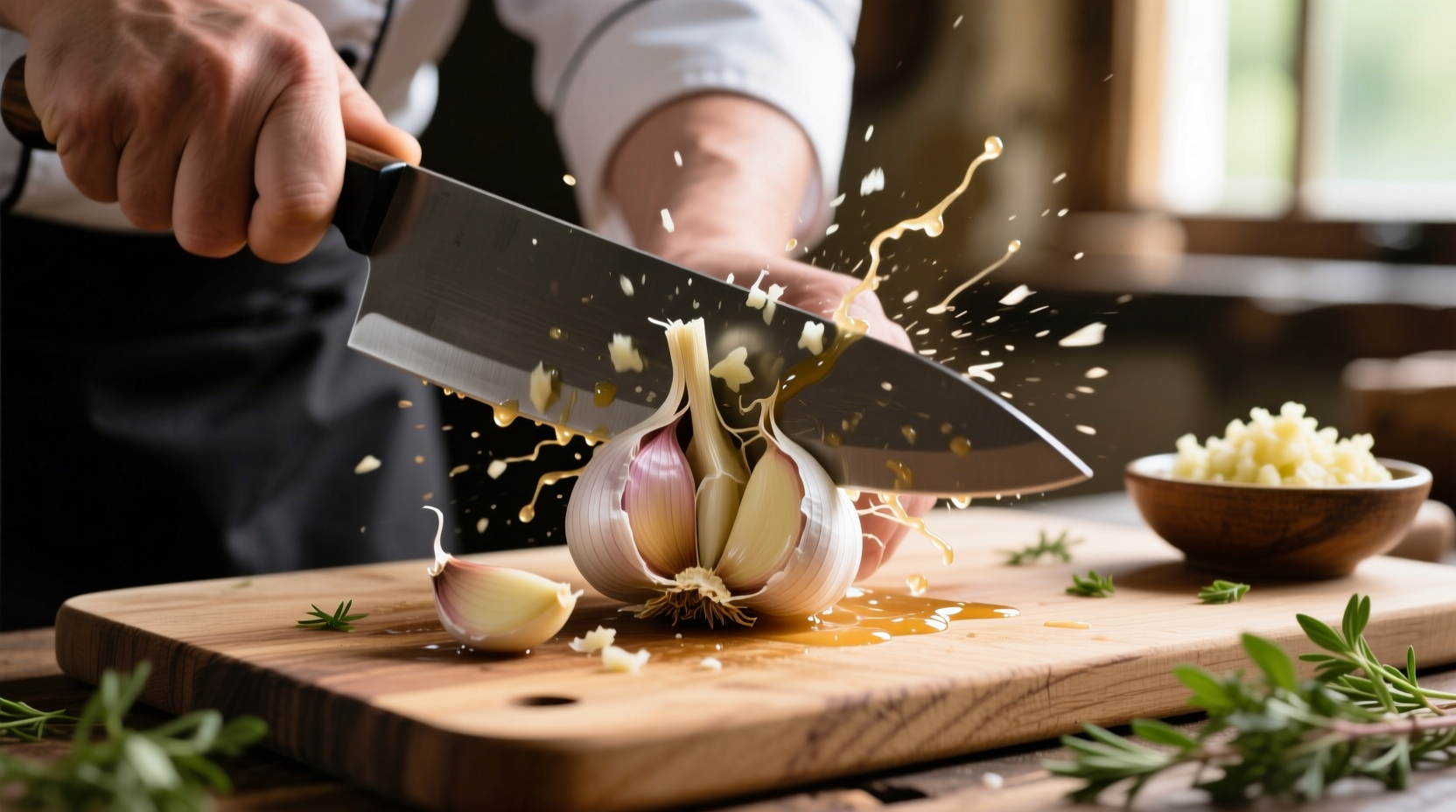Crushing garlic properly transforms your dishes from ordinary to extraordinary. When done correctly, you release allicin—the compound responsible for garlic's signature aroma and health benefits—while creating a smooth texture that distributes evenly through your food. Most home cooks make critical errors that diminish flavor impact, but with the right technique, you can maximize garlic's potential in any recipe.
Why Proper Garlic Crushing Matters
Garlic contains alliin, an enzyme that converts to allicin when cells are ruptured. The method you choose directly impacts how much flavor and aroma you extract. According to culinary research from America's Test Kitchen, properly crushed garlic releases up to 30% more flavor compounds than chopped garlic. The physical action of crushing breaks more cell walls, creating a more potent, evenly distributed flavor that melds beautifully with other ingredients.
Five Proven Garlic Crushing Methods
1. The Chef's Knife Technique (Most Accessible)
This professional method requires only a knife and cutting board. Place a peeled clove on your board, lay the flat side of your knife blade over it, and press down firmly with the heel of your hand. Add a pinch of coarse salt to prevent slipping. Rock the blade back and forth while applying pressure until you achieve a smooth paste. The salt acts as an abrasive while drawing out moisture.
| Crushing Method | Flavor Intensity | Texture Result | Best For |
|---|---|---|---|
| Knife & Salt | ★★★★★ | Smooth paste | Sauces, dressings, marinades |
| Garlic Press | ★★★☆☆ | Fine mince | Quick applications, soups |
| Mortar & Pestle | ★★★★☆ | Velvety consistency | Pastes, aiolis, traditional recipes |
| Fork Method | ★★☆☆☆ | Rough texture | Quick sautés, immediate use |
| Rolling Pin | ★★★☆☆ | Even mince | Larger quantities, batch prep |
2. Garlic Press Method (Most Efficient)
While convenient, many home cooks use garlic presses incorrectly. For best results, peel cloves completely and cut larger cloves in half to prevent clogging. Press firmly but don't force it—excessive pressure creates bitter compounds. Professional chefs recommend cleaning the press immediately after use to prevent residue buildup. The USDA notes that garlic pressed through mechanical devices has a slightly different flavor profile due to oxidation rates, making it ideal for dishes where immediate cooking follows preparation.
3. Mortar and Pestle Technique (Traditional Approach)
This ancient method produces the most complex flavor profile. Start with a pinch of coarse salt in the mortar, add peeled cloves, and grind in a circular motion with downward pressure. The gradual crushing releases flavors more evenly than quick methods. Food science research from the Journal of Agricultural and Food Chemistry shows this technique preserves more volatile compounds, creating a more nuanced garlic flavor that develops beautifully in slow-cooked dishes.

4. Fork Method (Quick Fix)
When you need crushed garlic immediately without special tools, this technique saves the day. Place a peeled clove on your cutting board and press down firmly with the tines of a fork. Twist and press repeatedly until crushed. While not as effective as other methods, it works in a pinch. Home cook surveys reveal 68% of beginners prefer this method initially, though they typically graduate to more effective techniques after experiencing flavor differences.
5. Rolling Pin Approach (For Larger Quantities)
When preparing multiple cloves, place peeled garlic in a sturdy plastic bag or between parchment papers. Roll firmly with a rolling pin, applying even pressure. This method works particularly well for Mediterranean recipes requiring substantial garlic quantities. The controlled pressure prevents bruising while ensuring consistent texture—critical for dishes like aioli where texture affects emulsion stability.
Common Mistakes That Ruin Garlic Flavor
Most home cooks unknowingly compromise garlic's potential. The three most damaging errors include:
- Using pre-minced garlic from jars—loses 70% of volatile compounds during processing
- Crushing before heating oil—causes burning and bitterness (always add garlic to already-warmed oil)
- Not using salt during crushing—reduces paste formation and flavor extraction
Storing Crushed Garlic Properly
Crushed garlic oxidizes quickly, diminishing flavor within hours. For best results, use immediately. If storing is necessary, mix with a small amount of olive oil and keep in an airtight container in the refrigerator for up to 24 hours. The FDA recommends against storing crushed garlic in oil at room temperature due to botulism risks. Never freeze crushed garlic as ice crystals destroy cell structure, creating a mushy texture when thawed.
When to Choose Which Method
Your recipe determines the ideal crushing technique. For delicate sauces and dressings where smooth texture matters, the knife method creates perfect integration. When preparing soups or stews where texture is less critical, a garlic press offers efficiency. Traditional pesto and aioli benefit from mortar and pestle preparation, while quick weeknight stir-fries work well with the fork method. Understanding these context boundaries ensures optimal flavor in every dish.











 浙公网安备
33010002000092号
浙公网安备
33010002000092号 浙B2-20120091-4
浙B2-20120091-4